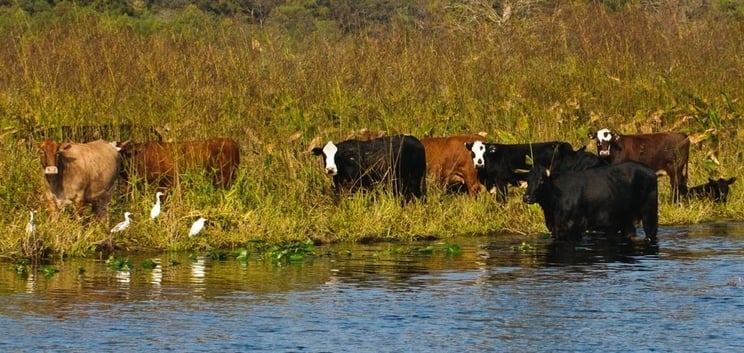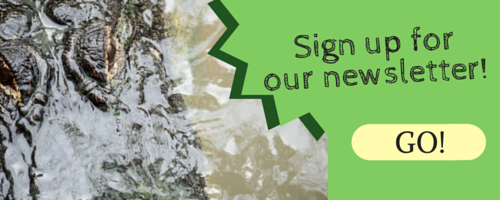Since 2010, we've operated under the mission of providing an unforgettable Everglades experience that promotes a connection with animals while inspiring education and conservation. Originally inspiring locals, our reach and influence has grown far beyond the shores of Lake Cypress. Within our gift shop, you might notice a world map filled with different colored pins. From those across the pond to our neighbors just down Canoe Creek Road, visitors arrive curious, wanting to experience the untold side of Florida, and they're hungry for adventure. With that being said, we get a lot questions about the wildlife on Lake Cypress and the Florida Everglades. So in this blog, we're answering the top five questions our airboat captains get asked during an Orlando airboat ride. That way, you have more time to take photos of Lake Cypress...

1. Why are there so many bald eagles?
Most people associate flamingos with Florida due to their tropical color. But did you know that Florida is actually home to the second largest population of bald eagles in the US? Second to Alaska, Florida's biodiversity in food and lakes creates an ideal breeding environment for bald eagles. In fact, until 2007, Florida supported the highest number of breeding bald eagles in the lower 48 states!
2. How big do alligators get?
Despite what you might've seen in movies like Lake Placid (which was actually a crocodile), American alligators don't get quite that big. On average, male american alligators can grow to be 11.2 feet and females average around 8.2 feet. However, like humans, some alligators are born special. For example, according to the Florida Fish and Wildlife Conservation Committe, the Florida state record for the largest alligator caught is 14 feet and 3.5 inches!

3. How can you tell which alligators are male and which are female?
If we're being honest... when alligators are submersed under the water, it can be challenging to distinguish the sex. And frankly, you might find it just as hard when they're on shore! (Here are three things to look for when distinguishing a male versus female alligator!) The primary hint for adult gators is that, as mentioned earlier, male gators tend to be longer than female gators, so if the gator is longer than 9 feet, you've probably run across a male.

4. What's with all the cattle on Lake Cypress?
Despite what tourists may think, Florida's animal icon wasn't always a cute mouse. For more than a century, Osceola County has been known to locals and historians as the cattle frontier of Florida. Many of the family ranches you see across the county, such as the Doc Partin Ranch, come from a long line of ranchers who played a part in setting the foundation for Osceola County. Though time has changed the layout and landscape that older generations may remember it by, the ranches found throughout Kissimmee are able to give tourists and even younger generations a glimpse of Osceola's beginnings.
5. What determines the sex of alligators?
For most animals, the sex of offspring is determined by sex chromosomes at the time of conception. However, alligators and other reptiles such as crocodiles, turtles, and lizards don't have sex chromosomes. Instead, the sex of their young is determined by the temperature at which their eggs incubate. This means that if a nest's temperature reaches 93 degrees or higher, it will yield all male gators, if the nest's temperature is below 86 degrees it will yield all female gators. And, a mix of genders occurs when the nest temperature falls in between 93 and 86 degrees. Isn't that wild!?
While this list represents just a few of the most popular questions our Florida airboat captains receive each day, there is far more to discover about the Florida Everglades. Some days, even we learn a new thing or two. So quench your 'do-something-adventurous' thirst and learn something new about the wild side of Florida!




